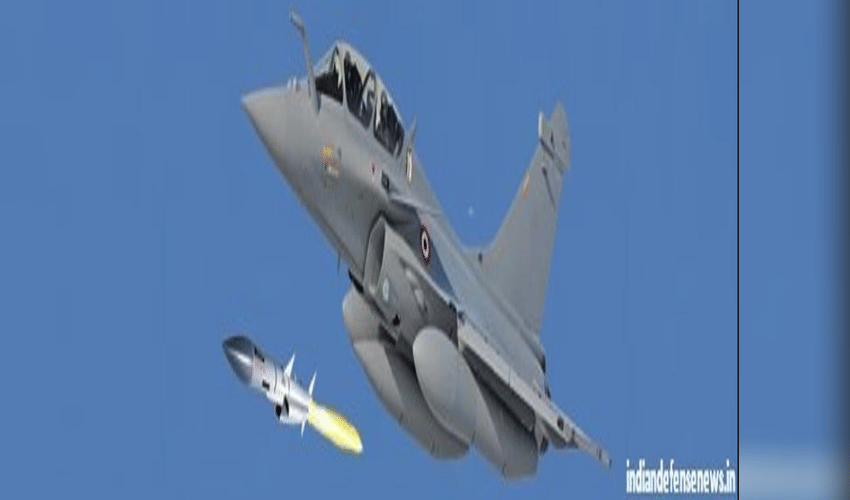Military
India Enhances Air Dominance by Procuring More Meteor Missiles for Its Rafale Aircraft Fleet

India is poised to further strengthen its aerial strike and defence capabilities with the acquisition of an additional batch of Meteor Beyond Visual Range (BVR) air-to-air missiles for the Indian Air Force’s Rafale fleet. The deal, estimated at around ₹1,500 crore, is expected to boost India’s long-range combat effectiveness and reinforce its deterrence posture in the region. The Defence Ministry is nearing final approval for the procurement from European missile manufacturer MBDA. Once sanctioned, the purchase will further enhance the Rafale’s status as the only IAF platform currently capable of deploying the Meteor — a missile acclaimed for its extended range and exceptional precision.
Developed through a European consortium led by MBDA, the Meteor missile is equipped with an active radar seeker and ramjet propulsion, offering sustained power and a range of up to nearly 200 kilometres. This technology enables Indian Rafales to engage adversaries before being detected, giving them a significant tactical edge over aircraft using conventional BVR systems.
India’s 36 Rafale jets, acquired under the 2016 France-India agreement, are already armed with Meteor, SCALP, and MICA missiles. The upcoming naval variant, the Rafale-M — intended for aircraft carrier operations — is also expected to integrate the Meteor, ensuring interoperability between the Air Force and Navy.
The decision to procure more Meteors was influenced by operational lessons from ‘Operation Sindoor’ earlier this year. During the mission, Rafales and Su-30MKIs carried out successful deep-strike operations against enemy and terrorist targets inside Pakistan. The Pakistan Air Force attempted a counterattack using Chinese-origin PL-15 BVR missiles but failed to achieve meaningful results.
Intelligence inputs have since indicated Pakistan’s growing dependence on Chinese BVR systems such as the PL-15 and PL-21. To maintain its superior air combat reach, India plans to expand its Meteor arsenal as part of a broader strategic deterrence initiative. The Meteor’s advanced networking capabilities also enable Indian Rafales to share target data mid-flight, improving situational awareness and coordination.
India is expediting development of its indigenous Astra missile family, designed by DRDO. The Astra Mk-2, currently in integration trials with the Su-30MKI and soon with the TEJAS Mk-1A, boasts a strike range exceeding 200 kilometres — narrowing the gap with international systems. Approximately 700 Astra Mk-2 missiles are expected to be inducted in upcoming phases.
The Meteor will continue to serve as the Rafale’s primary long-range air dominance weapon, complemented in the future by indigenous technologies such as next-generation anti-radiation missiles. Together, the Meteor and Astra series will enable the Indian Air Force to maintain unmatched aerial reach, precision engagement, and strategic control across multiple theatres. By bolstering the Rafale fleet with additional Meteor missiles and advancing indigenous weapons programs, India aims to sustain a decisive edge in beyond-visual-range warfare — ensuring readiness, deterrence, and dominance in regional airspace for years to come.



